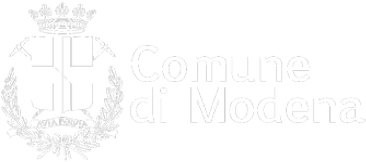Terziarie di San Domenico Church
Private property
Closed to visitors.
The church is dedicated to the Blessed Virgin of the Rosary and to Saint Catherine of Siena.
Only the external façade of this church can be admired: very simple and adorned with four pilasters, its doorway crowned by a semicircular window. It was once part of a convent, opened on 28 October 1607 thanks to the Modena aristocrat Nicolò Molza, and entrusted to the Augustinian nuns who looked after girls unable to marry or enter the convent. In 1783, at the behest of Duke Hercules III of Este, the convent was closed and the nuns moved to the town monastery of San Paolo. The building was handed over to the Opera Pia Generale, a religious charity, and a part of it was destined as a retreat, or “Ritiro” for the female poor and orphans (the area was henceforth known as the “Ritiro district”).
On 15 April 1815, Duke Francis IV of Austria-Este handed over the management of the Ritiro to the Third Order of Saint Dominic (a group of women who led a monastic life and devoted themselves to educating girls).
In 1816, the Third Order adopted the habit of Saint Dominic and became an enclosed order. The building continued to be used for teaching, and became a kindergarten, elementary and secondary school during the twentieth century. In 2011, the last remaining nuns, all very elderly, moved to a convent in Mondovì (Cuneo), when the building was emptied and put up for sale.
The present-day layout of the church is different from its original arrangement. It has a simple rectangular plan, next to the convent building, and its interior is divided into two main areas: the external church for the faithful, with an entrance on Via Belle Arti, and the internal church at the back, reserved for the nuns. A double altar was situated on the wall that divided the two areas. On the main altar of the external church, an altarpiece by Ludovico Carracci depicting the Assumption of the Virgin was erected in 1607, now in the Galleria Estense. The internal church contained a fine choir stand in walnut, the work of Arcangelo Brandoli (1780).
The external church was decorated with works by the artists from the nearby Atestina Academy of Fine Arts, an institution erected in 1785 at the behest of Duke Hercules III of Este and directed by the architect Giuseppe Maria Soli. The works included an altarpiece by Adeodato Malatesta from 1842 depicting the Madonna and Child with Saints Luigi Gonzaga and Alfonso de' Liguori.
The church vaults were painted by Flaminio Veratti and Francesco Stringa, both court artists, while the organ above the entrance to the church was made by Domenico Traeri (18th c.).
In 1847, as mentioned on a plaque above the external door, the church was renovated according to a design by the court architect Giovanni Lotti.
(Source: "Arte nei Monasteri, arte per I Monasteri- Scrittura, arte e architettura presso I Benedettini e altri ordini Religiosi”, by Sonia Cavicchioli and Vincenzo Vandelli – Franco Cosimo Panini, Modena, 2016)
HOW TO GET THERE
Old city centre, limited traffic zone. From the train station, go to the Mata building (former Manifattura Tabacchi) in via della Manifattura Tabacchi, and take Via S. Orsola as far as Corso Vittorio Emanuele II. Turn right into Corso Cavour, pass Palazzo Ducale and turn left into Via Tre Febbraio. Turn right into Via Belle Arti, go past the Church of San Domenico until you see the façade of the Church of the Terziarie at street number 32.





